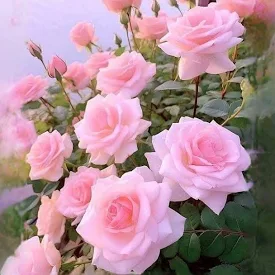flowers impression class notes
lower Impressions: An Overview
Introduction
Flowers have held significant meanings and impressions across cultures and history. They are not only aesthetically pleasing but also carry emotional and symbolic weight. Understanding flower impressions can enhance our appreciation of nature and inform our choices in gifting, decoration, and celebrations.

The Language of Flowers
The concept of “floriography,” or the language of flowers, became especially popular in the Victorian era. Each flower and its color were assigned specific meanings, allowing people to communicate feelings and sentiments that were often difficult to express openly.
Key Flowers and Their Impressions
- Rose
- Colors & Meanings:
- Red: Love and passion.
- White: Purity and innocence.
- Yellow: Friendship and joy.
- Impression: Roses are often seen as the ultimate symbol of love and romance, making them a popular choice for Valentine’s Day and anniversaries.
- Colors & Meanings:
- Lily
- Types: Various types, including calla, Easter, and tiger lilies.
- Meanings:
- White Lily: Purity and virtue.
- Tiger Lily: Passion and pride.
- Impression: Lilies often convey a sense of elegance and sophistication, frequently used in weddings and funerals.
- Sunflower
- Meaning: Adoration, loyalty, and longevity.
- Impression: Sunflowers exude warmth and positivity, often associated with happiness and cheerfulness. They are commonly used in summer arrangements and festive decorations.
- Daisy
- Meaning: Innocence and purity.
- Impression: Daisies represent simplicity and purity. Their bright, cheerful appearance makes them a popular choice for casual arrangements and children’s celebrations.
- Orchid
- Meaning: Beauty, strength, and luxury.
- Impression: Orchids are often regarded as exotic and sophisticated, frequently associated with refinement and elegance. They are popular in upscale floral arrangements.
- Tulip
- Meaning: Perfect love and prosperity.
- Impression: Tulips symbolize spring and renewal. Their variety of colors allows for a wide range of emotions to be conveyed, making them versatile for any occasion.
- Chrysanthemum
- Meaning: Joy, optimism, and longevity (in many cultures, particularly in Asia).
- Impression: Often seen as a symbol of happiness, chrysanthemums are popular in autumn floral displays and can convey both warmth and celebration.
- Peony
- Meaning: Romance, prosperity, and good fortune.
- Impression: Peonies are lush and full, often associated with weddings and romantic occasions, embodying a sense of elegance and charm.
- Lavender
- Meaning: Calmness and serenity.
- Impression: Known for its soothing fragrance, lavender represents tranquility and is often used in aromatherapy and relaxation spaces.
- Forget-Me-Not
- Meaning: Remembrance and true love.
- Impression: This small blue flower is a powerful symbol of memory and connection, often given to honor someone special or cherished memories.
Cultural Significance
- Western Cultures: Flowers are often used in celebrations, such as weddings and holidays, where specific flowers carry deep meanings.
- Eastern Cultures: In many Asian cultures, flowers like chrysanthemums and lotus carry significant meanings related to life, death, and spirituality.
Flowers in Literature and Art
Flowers have long been a source of inspiration in literature, poetry, and art. They are often used as metaphors to convey complex emotions and themes:
- Shakespeare: Frequently referenced flowers to depict beauty, love, and loss.
- Impressionism: Artists like Monet captured flowers in their natural beauty, emphasizing light and color.
Flowers and Their Uses
- Gifting: Flowers are a universal gift for various occasions, expressing sentiments of love, sympathy, and celebration.
- Decoration: Used in home decor, weddings, and events to enhance aesthetic appeal and create an inviting atmosphere.
- Healing: Certain flowers are used in traditional medicine and aromatherapy for their healing properties, such as lavender and chamomile.
Seasonal Flowers
Understanding the seasonal availability of flowers can enhance their impact:
- Spring: Tulips, daffodils, and hyacinths symbolize renewal and growth.
- Summer: Sunflowers, roses, and daisies reflect warmth and vibrancy.
- Autumn: Chrysanthemums, asters, and dahlias convey richness and comfort.
- Winter: Poinsettias and evergreen arrangements are popular for festive occasions.
Conclusion
Flowers are more than just beautiful plants; they are powerful symbols that carry deep emotional and cultural significance. Understanding flower impressions can enhance our communication and appreciation of nature. Whether used in celebrations, gifts, or decor, flowers enrich our lives and connect us to emotions and memories. By being mindful of the meanings behind flowers, we can create more thoughtful and impactful expressions of our feelings.
